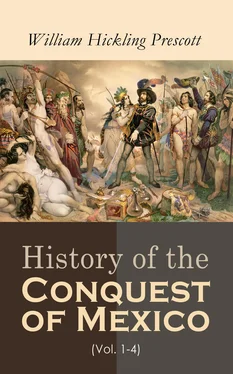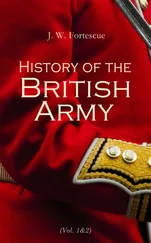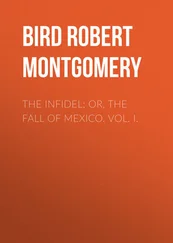[260]Sahagun, Hist. de Nueva-España, lib. 4, cap. 37; lib. 8, cap. 13.—Torquemada, Monarch. Ind., lib. 13, cap. 23.—Rel. d’un gentil’ huomo, ap. Ramusio, tom. iii. fol. 306.
[261]Herrera, Hist. general, dec. 2, lib. 7, cap. 8.—Torquemada, Monarch. Ind., lib. 14, cap. 11.—The Mexican nobles entertained minstrels in their houses, who composed ballads suited to the times, or the achievements of their lord, which they chanted, to the accompaniment of instruments, at the festivals and dances. Indeed, there was more or less dancing at most of the festivals, and it was performed in the court-yards of the houses, or in the open squares of the city. (Ibid., ubi supra.) The principal men had, also, buffoons and jugglers in their service, who amused them and astonished the Spaniards by their feats of dexterity and strength (Acosta, lib. 6, cap. 28; also Clavigero (Stor. del Messico, tom. ii. pp. 179-186), who has designed several representations of their exploits, truly surprising). It is natural that a people of limited refinement should find their enjoyment in material rather than intellectual pleasures, and, consequently, should excel in them. The Asiatic nations, as the Hindoos and Chinese, for example, surpass the more polished Europeans in displays of agility and legerdemain.
[262]“Y de esta manera pasaban gran rato de la noche, y se despedian, é iban á sus casas, unos alabando la fiesta, y otros murmurando de las demasías y excesos, cosa mui ordinaria en los que á semejantes actos se juntan.” Torquemada, Monarch. Ind., lib. 13, cap. 23.—Sahagun, Hist. de Nueva-España, lib. 9, cap. 10-14.
[263][In reading this chapter we must constantly bear in mind the fact that it is founded almost entirely upon traditions. We must also remember—first, that Ixtlilxochitl is the principal authority for the legends therein chronicled; second, that Ixtlilxochitl possessed a very fertile imagination; third, that Ixtlilxochitl’s “Historia Chichimeca” was not written from an entirely unprejudiced point of view. To use the words of Bandelier (Archæological Tour in Mexico, p. 192): “Ixtlilxochitl is always a very suspicious authority, not because he is more confused than any other Indian writer, but because he wrote for an interested object, and with the view of sustaining tribal claims in the eyes of the Spanish government.”—M.]
[264]For a criticism on this writer, see the Postscript to this chapter.
[265]See Chapter I. of this Introduction, p. 17.
[266]Ixtlilxochitl, Relaciones, MS., No. 9.—Idem, Hist. Chich., MS., cap. 19.
[267]The adventures of the former hero are told with his usual spirit by Sismondi (Républiques Italiennes, chap. 79). It is hardly necessary, for the latter, to refer the English reader to Chambers’s “History of the Rebellion of 1745;” a work which proves how thin is the partition in human life which divides romance from reality.
[268]Ixtlilxochitl, Relaciones, MS., No. 10.
[269]Ixtlilxochitl, Relaciones, MS., No. 10.—Hist. Chich., MS., cap. 20-24.
[270]Idem, Hist. Chich., MS., cap. 25. The contrivance was effected by means of an extraordinary personal resemblance of the parties; a fruitful source of comic—as every reader of the drama knows—though rarely of tragic interest.
[271]It was customary, on entering the presence of a great lord, to throw aromatics into the censer. “Hecho en el brasero incienso y copal, que era uso y costumbre donde estaban los Reyes y Señores, cada vez que los criados entraban con mucha reverencia y acatamiento echaban sahumerio en el brasero; y así coneste perfume se obscurecia algo la sala.” Ixtlilxochitl, Relaciones, MS., No. 11.
[272]Ixtlilxochitl, Hist. Chich., MS., cap. 26.—Relaciones, MS., No. 11.—Veytia, Hist. antig., lib. 2, cap. 47.
[273]“Nezahualcoiotzin le dixo, que si viese á quien buscaban, si lo iría á denunciar? respondió, que no; tornándole á replicar diciéndole, que haria mui mal en perder una muger hermosa y lo demas que el rey Maxtla prometia, el mancebo se rió de todo, no haciendo caso ni de lo uno ni de lo otro.” Ixtlilxochitl, Hist. Chich., MS., cap. 27.
[274]Ibid., MS., cap. 26, 27.—Relaciones, MS., No. 11.—Veytia, Hist. antig., lib. 2, cap. 47, 48.
[275]Ixtlilxochitl, MSS., ubi supra.—Veytia, ubi supra.
[276]Ixtlilxochitl, Hist. Chich., MS., cap. 28-31.—Relaciones, MS., No. 11.—Veytia, Hist. antig., lib. 2, cap. 51-54.
[277]See page 21of this volume.
[278]“Que venganza no es justo la procuren los Reyes, sino castigar al que lo mereciere.” MS. de Ixtlilxochitl.
[279]See Clavigero, Stor. del Messico, tom. i. p. 247.—Nezahualcoyotl’s code consisted of eighty laws, of which thirty-four only have come down to us, according to Veytia. (Hist. antig., tom. iii. p. 224, nota.) Ixtlilxochitl enumerates several of them. Hist. Chich., MS., cap. 38, and Relaciones, MS., Ordenanzas.
[280]Nowhere are these principles kept more steadily in view than in the various writings of our adopted countryman Dr. Lieber, having more or less to do with the theory of legislation. Such works could not have been produced before the nineteenth century.
[281]Ixtlilxochitl, Hist. Chich., MS., cap. 36.—Veytia, Hist. antig., lib. 3, cap. 7.—According to Zurita, the principal judges, at their general meetings every four months, constituted also a sort of parliament or córtes, for advising the king on matters of state. See his Rapport, p. 106; also ante , p. 33.
[282]Ixtlilxochitl, Hist. Chich., MS., cap. 36.—Clavigero, Stor. del Messico, tom. ii. p. 137.—Veytia, Hist. antig., lib. 3, cap. 7.—“Concurrian á este consejo las tres cabezas del imperio, en ciertos dias, á oir cantar las poesías históricas antiguas y modernas, para instruirse de toda su historia, y tambien cuando habia algun nuevo invento en cualquiera facultad, para examinarlo, aprobarlo, ó reprobarlo. Delante de las sillas de los reyes habia una gran mesa cargada de joyas de oro y plata, pedrería, plumas, y otras cosas estimables, y en los rincones de la sala muchas de mantas de todas calidades, para premios de las habilidades y estímulo de los profesores, las cuales alhajas repartian los reyes, en los dias que concurrian, á los que se aventajaban en el ejercicio ne sus facultades.” Ibid.
[283]Veytia, Hist. antig., lib. 3, cap. 7.—Clavigero, Stor. del Messico, tom. i. p. 247.—The latter author enumerates four historians, some of much repute, of the royal house of Tezcuco, descendants of the great Nezahualcoyotl. See his Account of Writers, tom. i. pp. 6-21.
[284]“En la ciudad de Tezcuco estaban los Archivos Reales de todas las cosas referidas, por haver sido la Metrópoli de todas las ciencias, usos, y buenas costumbres, porque los Reyes que fuéron de ella se preciáron de esto.” (Ixtlilxochitl, Hist. Chich., MS., Prólogo.) It was from the poor wreck of these documents, once so carefully preserved by his ancestors, that the historian gleaned the materials, as he informs us, for his own works.
[285]“Aunque es tenida la lengua Mejicana por materna, y la Tezcucana por mas cortesana y pulida.” (Camargo, Hist. de Tlascala, MS.) “Tezcuco,” says Boturini, “where the noblemen sent their sons to acquire the most polished dialect of the Nahuatlac language, and to study poetry, moral philosophy, the heathen theology, astronomy, medicine, and history.” Idea, p. 142.
[286]“He composed sixty songs,” says the author last quoted, “which have probably perished by the incendiary hands of the ignorant.” (Idea, p. 79.) Boturini had translations of two of these in his museum (Catálogo, p. 8), and another has since come to light.
[287]Difficult as the task may be, it has been executed by the hand of a fair friend, who, while she has adhered to the Castilian with singular fidelity, has shown a grace and flexibility in her poetical movements which the Castilian version, and probably the Mexican original, cannot boast. See both translations in Appendix, 2, No. 2.
Читать дальше












